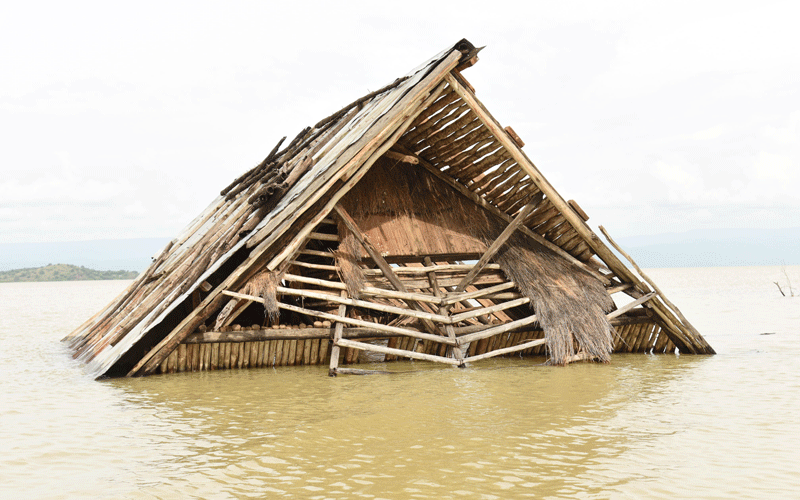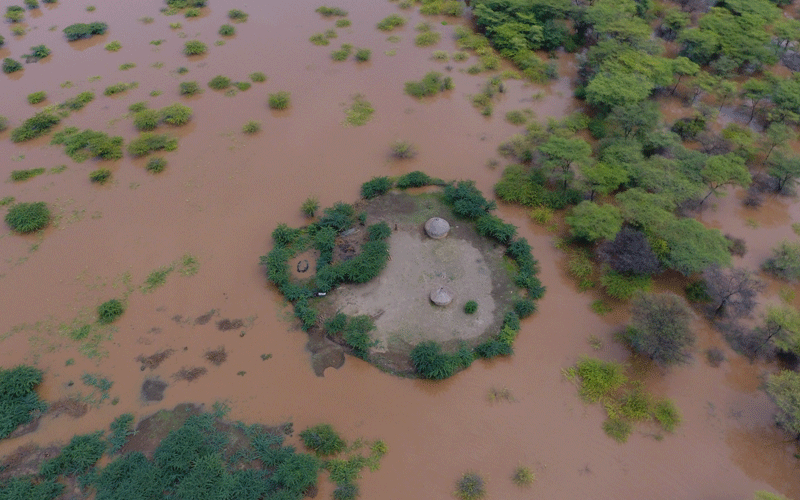Experts scratch heads in wake of lakes expansion

Bernard Gitau @benagitau
A team of geologists and hydrologists has camped in Baringo County to establish the cause of swelling of Rift Valley lake waters and the possibility of lakes Baringo and Bogoria merging.
Termed as a looming environmental catastrophe, reality of Lake Baringo fresh waters, endowed with birds, fish, hippopotamuses and crocodiles, meeting the alkaline Lake Bogoria dawning on scientists and local residents.
At Sandai area in Baringo South constituency, geologists, hydrologists and water quality experts from Water Resource Authority (WRA) have pitched tent in the region to conduct geological surveys.
Speaking to the People Daily, Njoash Orute, a hydrologist, said the merger of the two lakes is a matter of when.
“We are facing a catastrophe with less than one kilometre separating the two lakes. If the water levels continue to rise, fish, crocodiles and hippos in Lake Baringo are in grave danger,” he said.
Doing profiles
Already, Lake 94 and Lake Baringo have merged though both are freshwater lakes that support abundant wildlife and aquatic life.
As the hydrologists continue with their research on distribution, circulation and physical properties of the earth’s underground and surface waters in the area, geologists on the other hand are armed to the teeth. 
Samson Oira, a geologist at WRA said their aim is to study the saturation of subsurface area and connection between surface and underground waters.
“That is why we are doing profiles across the rivers, along the lakes and next to the fault lines, to investigate how those things are related to the raising water levels,” said Oira.
According to the two, the main cause of Rift Valley region lakes swelling is increased rainfall though other factors have not been ruled out.
On the merger of Lake Bogoria and Baringo, Oira has revealed that signs are evident and action must be taken to avert an environmental crisis.
“All Rift Valley lakes are discharge zones for the ground water system within the Rift and are all connected,” he said.
Oira said an earlier study showed Lake Nakuru and Baringo are connected but the study did not explain whether there was connection between lakes Baringo and Bogoria.
Ecological disater
“We are conducting a study now to see if they are connected underground. In between Bogoria and Baringo, the soil is clay and hence less permeable.
There is also another aspect on how the two lakes are connected, Loboi River partially flows into Molo and on the other part flows into Lake Bogoria,” he said.
Due to the swelling of the lakes, the two rivers are expanding and are likely to flow into each other and Waseges that feed Bogoria, are likely to mix with River Molo.
However, the emerging trend has seen the lakes change over time with Baringo recording a pH of 7.8 while Bogoria’s is 10.5 and the merger, experts say, spells ecological disaster.
Lake Baringo provides irrigation and drinking water but Fred Nyongesa, a water expert, warns it’s not fit for human consumption.
Several rivers feed Lake Baringo: the Molo, Perkerra and Ol Arabel. It has no obvious outlet; the waters are assumed to seep through lake sediments into the faulted volcanic bedrock.
It is one of the two freshwater lakes in the Rift Valley in Kenya, the other being Lake Naivasha. 
Lake Bogoria is an endorheic soda lake with hot springs, geysers and fumaroles along its shore.
The hot springs, the geysers, four seasonal rivers and numerous seasonal streams feed it.The rivers are Waseges, Sandai, Loboi, Emsos and Mogun.
To prevent the rivers merging, geologists led by Oira recommended the Sandai road between Bogoria and River Loboi be raised to act as a dyke.
On the other end of Waseges, the National Irrigation Board can be allowed to extract more water from the river to stop more flow of water in Lake Bogoria and this will work as a control valve.
According to indigenous people led by elder Ingiriyan Lemeiguran, there was a lake which used to connect the two lakes.
“ We used to hear theories from our great grandfathers that there was a lake but it disappeared.
The soil also supports the claims because it constitutes sediments found in lake beds,” he said.
According to Oira, they are now trying to investigate whether the expected merger between the two lakes, is a way of water reclaiming its original flow and nature.
Orute said lake Bogoria has increased by 34 square kilometre to 43 square kilometre where Baringo has the highest rise from 174 square kilometre to 213 square kilometre.



